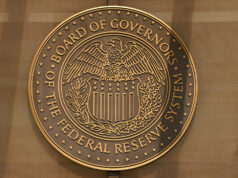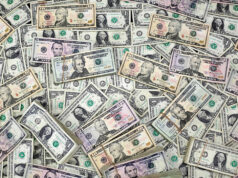Peso weakens on US tax reform
THE PESO traded weaker against the dollar on Monday on the back of the passage of the US tax plan.
The local unit finished at P50.665 against the greenback on Monday, weaker by 29.5 centavos than its P50.37-per-dollar close on Friday.
The peso opened slightly weaker at P50.40, which was also its best showing for the day. The peso’s intraday low, meanwhile, stood at P50.67 against the greenback.
Dollars traded surged to $723.4 million yesterday from the $444.7-million volume logged the previous session.
Traders cited the passage of the tax cut bill in the US Senate as the main driver for the strengthening of the greenback.
“The dollar traded higher…due to the tax reform. The Senate voted for the implementation of the tax plan,” a trader said over the phone.
Over the weekend, Senate Republicans approved the bill with a narrow 51-49 result. The proposal slashes corporate taxes to 20% from the current 35%.
The Senate deal moves Republicans and President Donald J. Trump a big step closer to their goal of slashing taxes in what would be the largest change to US taxation since the 1980s.
Ruben Carlo O. Asuncion, chief economist of UnionBank of the Philippines, noted that investors weighed the positive impact of the corporate tax change.
Mr. Asuncion added that upbeat sentiment on the US tax plan overshadowed the investigation into the connection of then US presidential candidate Mr. Trump and Russia.
Last week, former national security adviser Michael T. Flynn said he was willing to testify regarding Mr. Trump’s connection in the alleged Russian meddling on the 2016 elections.
Meanwhile, another trader pointed out that some players took profits due to the peso’s rally in the past trading days.
“We’ve been seeing a significant improvement in the peso lately so given the move today, we saw a squeeze and thus we saw the dollar-peso to trade near the [intraday low],” the trader said.
For today, traders are expecting the peso to move between P50.50 and P50.80, while Mr. Asuncion gave a wider range of P50.50 to P51 as he noted that the tax cut passage would be [Mr. Trump’s] first potential legislative victory since coming into office.
“With this move, we’re going to see consolidation as I think more players would want to wait and see whether [the dollar ascent] is going to [continue or be reversed],” the second trader concluded.
Meanwhile, most Asian currencies also weakened on Monday with the dollar getting a lift from the US Senate’s approval of a tax overhaul plan at the weekend.
“I expect finally the tax reform will be passed and signed into law so in January we will see some modest gains in the dollar versus emerging Asian currencies,” said Gao Qi, Asia FX strategist at Scotiabank.
The dollar index, which measures the greenback against a basket of six major currencies, rose about 0.31% to 93.174 at 0644 GMT.
The Singapore dollar and the Thai baht weakened 0.19% and 0.12%, respectively
The Taiwan dollar traded flat ahead of Tuesday’s consumer price inflation numbers, expected to be 0.26%.
Malaysia’s ringgit firmed 0.36% on Monday, the most in the region, as November factory data showed the strongest expansion in the manufacturing sector since April 2014, thanks to solid growth in output and new orders on improved domestic and overseas demand.
The yuan firmed 0.08% even though the People’s Bank of China set a weaker fixing rate for the second consecutive day. The currency eased against the greenback on Friday and ended the week lower.
The Indian rupee firmed 0.12%. The Reserve Bank of India is due to hold monetary policy committee meeting on Wednesday.
Data issued on Friday showed India’s foreign exchange reserves crossed the $400 billion mark on Nov. 24, the highest since Sept. 22.
INDONESIAN RUPIAH
Indonesia’s rupiah traded flat as data for November showed inflation reached its lowest since December 2016 at 3.30% year on year, lower than expectations of 3.40% from a Reuters poll of analysts.
Core inflation for the same period also came in lower than expected, at 3.05%, against the expected 3.10%, lowering the potential for a rate hike.
S. KOREAN WON
The Korean won was the region’s second-biggest loser, weakening 0.21% against the greenback.
The Bank of Korea hiked the benchmark rate on Nov. 30, as was widely expected, for the first time in six years. — Karl Angelo N. Vidal with Reuters



